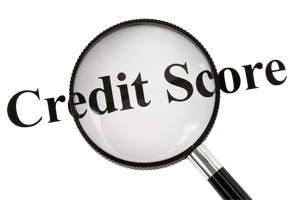While the temperatures start to cool off from the highs of the summer, the election cycle is beginning to really heat up. Included in this month's newsletter are a few of the known tax changes for 2013. There are also articles discussing businesses' annuity billing practices, giving children allowances, and ideas to control your email spam.
Allowances: What's Happening Today?
Ideas for you
Opinions vary greatly regarding whether to give allowances, how much to pay, whether to require chores for payment, and whether to pay for good grades. If you are considering giving an allowance here are some ideas to consider.
 | Set clear expectations. If you decide to pay an allowance make sure your children understand the rules. When will they receive it? What, if anything, must they do to receive it? What are the rules? |
 | Use an allowance to teach other things. Consider using the allowance to teach savings, charitable giving, and budgeting in addition to spending. Perhaps some of the allowance should be used to donate to church or a food-shelf. Have your child save for a larger ticket item like a bike or computer game. Perhaps a teen child should pay for their cell phone. Consider requiring part of the allowance be saved for college. |
 | Know the downside. If you require chores for pay, what happens if the work is not done? Perhaps a base allowance would work for you with bonus payments when special chores are done. Using an allowance to help understand the concept of work can be a good lesson if handled consistently. The downside to this approach is that your child may begin to think they should be paid for taking part in normal family activities. |
 | Use allowances as a discussion opportunity. A regular allowance gives you an opportunity to help your child learn important financial lessons. This is especially true if the allowance is used for things other than entertainment. This ongoing lesson can deeply establish an understanding for budgeting and savings and help your child create the association of work with income. |
Given that schools often overlook this important topic, establishing good financial habits at an early age can pay dividends for your children during their adult years.
Preview Key 2013 Tax Figures

While official numbers for 2013 are not yet released by the Internal Revenue Service (IRS), many figures are formulas set within the Internal Revenue Code (IRC) or are based on the Consumer Price Index (CPI) published by the Department of Labor. Using the release of CPI figures in late August, a number of reference resources are projecting key figures for 2013. They are noted here for your planning purposes:
Tax Brackets: While the actual tax brackets are not set for 2013, the rate of inflation that impacts the income levels for each tax rate is anticipated to go up 2.5%. Please recall that if Congress does not act, the 10% income tax bracket becomes 15% and the top income tax bracket moves from 35% to 39.6%.
Personal Exemption: $3,900 in 2013 ($3,800 in 2012)
| Standard Deductions: |
| Tax Year | 2013 | 2012 |
| Single | $6,100 | $5,950 |
| Head of Household | 8,950 | 8,700 |
| Married filing Joint | 12,200 | 11,900 |
| Married filing separately | 6,100 | 5,950 |
| Dependents | 1,000 | 950 |
| 65 or blind: | married | Add $1,200 | Add $1,150 |
| single | Add $1,500 | Add $1,450 |
| Other Key figures: |
| Tax Year | 2013 | 2012 |
| Gift tax exclusion | $14,000 | $13,000 |
| Roth and Traditional IRA Contribution limit | 5,500 | 5,000 |
|
Caution: Remember, significant pre-scheduled tax law changes will automatically be put in place in 2013 unless Congressional action is taken. The figures noted here are most likely not to be changed by Congressional action.
Everyone Wants a ''Tiny'' Piece of Your Income
The Problem of E-mail SPAM
Understanding CAN-SPAM
As always, should you have any questions or concerns regarding your situation please feel free to call.



















 While official numbers for 2013 are not yet released by the Internal Revenue Service (IRS), many figures are formulas set within the Internal Revenue Code (IRC) or are based on the Consumer Price Index (CPI) published by the Department of Labor. Using the release of CPI figures in late August, a number of reference resources are projecting key figures for 2013. They are noted here for your planning purposes:
While official numbers for 2013 are not yet released by the Internal Revenue Service (IRS), many figures are formulas set within the Internal Revenue Code (IRC) or are based on the Consumer Price Index (CPI) published by the Department of Labor. Using the release of CPI figures in late August, a number of reference resources are projecting key figures for 2013. They are noted here for your planning purposes:







 Turning back the clock to 2003, many states fed up with the flood of unwanted emails started passing their own anti-spam email laws. This stimulated the Federal Government to act in an attempt to make compliance a reasonable endeavor. This was done with the passage CAN-SPAM legislation.
Turning back the clock to 2003, many states fed up with the flood of unwanted emails started passing their own anti-spam email laws. This stimulated the Federal Government to act in an attempt to make compliance a reasonable endeavor. This was done with the passage CAN-SPAM legislation.